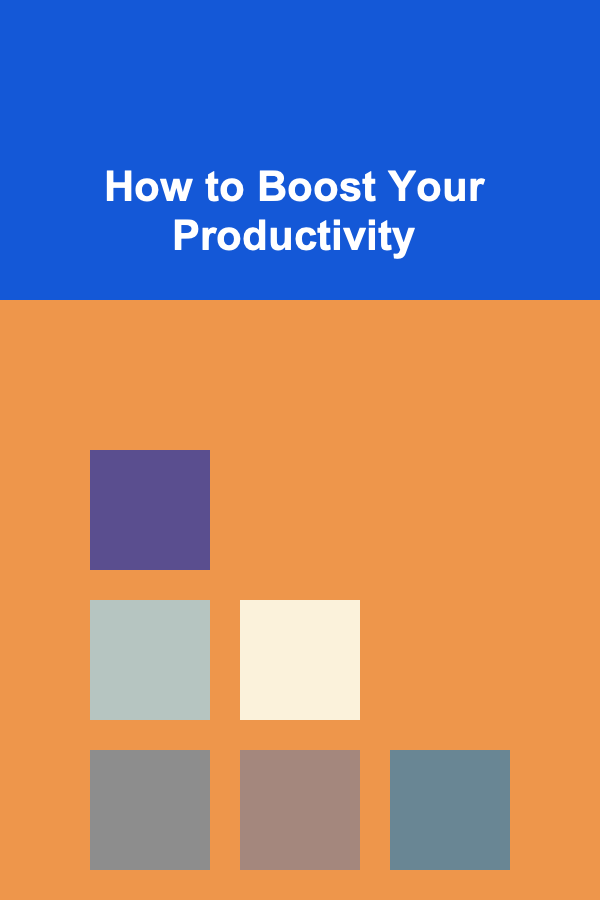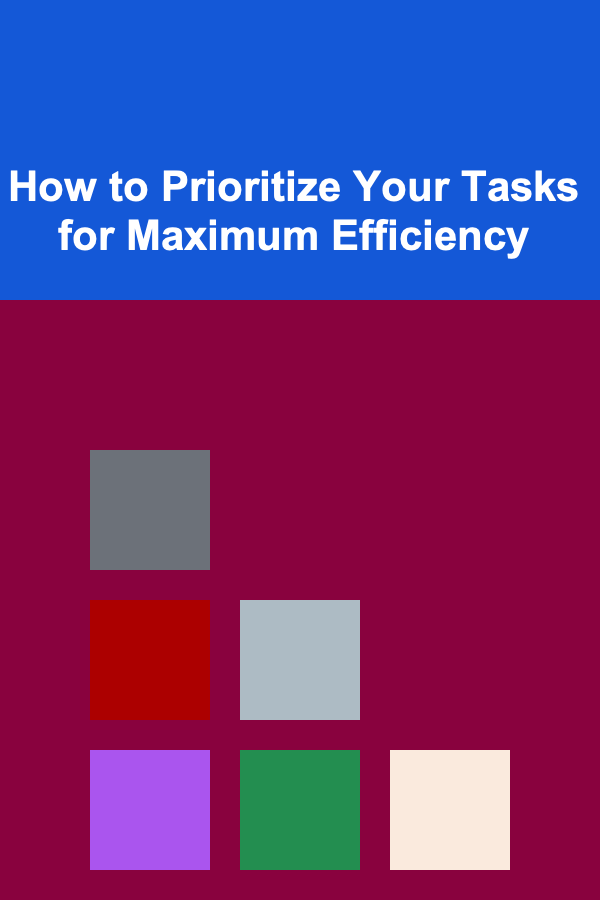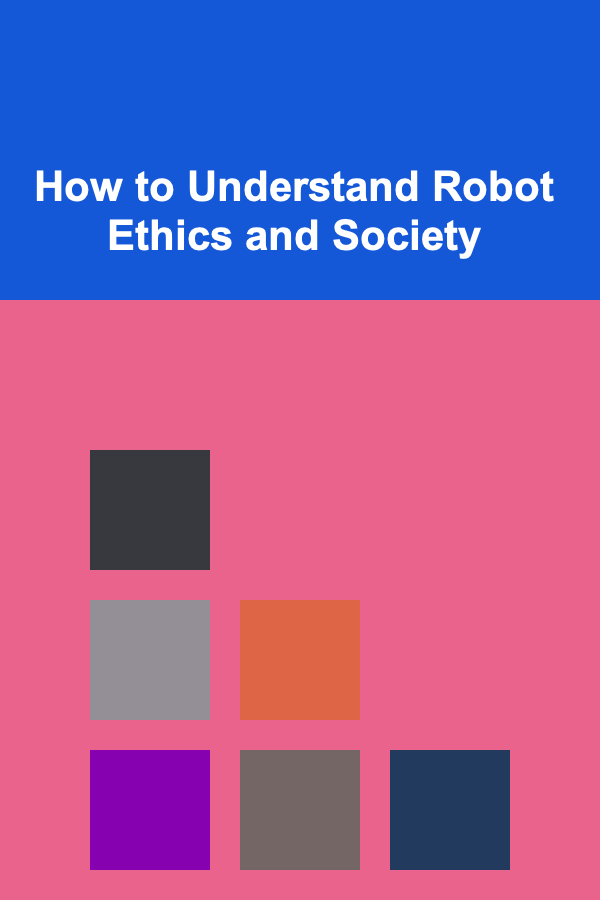
How to Boost Your Productivity
ebook include PDF & Audio bundle (Micro Guide)
$12.99$8.99
Limited Time Offer! Order within the next:

In today's fast-paced world, productivity has become a key measure of success, whether in the workplace, personal life, or in managing various projects. The ability to consistently perform tasks efficiently while maintaining quality has a direct impact on how well we achieve our goals. However, with the constant distractions, rising demands, and never-ending to-do lists, boosting productivity can feel like an overwhelming challenge. This article will explore proven strategies to enhance your productivity, focusing on practical steps, psychological insights, and sustainable practices.
Understanding Productivity
At its core, productivity is about achieving more with less effort and in less time. It's the ability to get important tasks done with a high level of focus and efficiency, while avoiding unnecessary distractions. Productivity is not just about working harder or longer; it's about working smarter.
1.1 The Difference Between Efficiency and Effectiveness
While many associate productivity with efficiency, it is important to distinguish between efficiency and effectiveness:
- Efficiency is about completing tasks in the least amount of time, with minimal resources or effort. It's about the "how" of doing things.
- Effectiveness refers to doing the right things that lead to achieving your goals. It's about the "what" of doing things.
Maximizing both efficiency and effectiveness is the ultimate goal in boosting productivity. If you work efficiently but focus on the wrong tasks, you may still end up wasting time.
1.2 The Productivity Paradox
Ironically, despite the increase in technology and tools designed to help us become more productive, many people feel less productive than ever. This phenomenon is known as the productivity paradox. One reason is that while we have more tools to help us, we also have more distractions and information overload. The challenge is finding balance and using these tools effectively to enhance rather than hinder productivity.
Psychological Insights into Productivity
Before diving into strategies to boost productivity, it's important to understand the psychological factors that influence how productive we are. Understanding why we procrastinate, feel overwhelmed, or lose motivation can help us address the root causes and make sustainable changes.
2.1 The Role of Motivation
Motivation is a critical driver of productivity. It's the internal force that propels us to complete tasks. Motivation can be classified into two types:
- Intrinsic Motivation: This comes from within. It's the desire to do something because it is inherently enjoyable or satisfying. For instance, working on a passion project because you love it is driven by intrinsic motivation.
- Extrinsic Motivation: This comes from external factors, such as rewards, recognition, or avoiding punishment. An example is completing a project to earn a promotion or a paycheck.
Both types of motivation can be powerful, but intrinsic motivation is often more sustainable and leads to better long-term results. Finding ways to make tasks meaningful or enjoyable can significantly boost productivity.
2.2 The Power of Focus
Focus is the ability to direct your attention on a specific task, blocking out distractions. The human brain is not designed to multitask efficiently, and attempting to do so can actually decrease productivity. Studies have shown that multitasking can reduce the quality of your work, slow you down, and lead to errors.
To truly boost productivity, it's important to train yourself to focus deeply on one task at a time. This is often referred to as deep work , a concept popularized by Cal Newport in his book Deep Work: Rules for Focused Success in a Distracted World. Deep work involves immersing yourself fully in a task without distractions, allowing you to accomplish more in less time.
2.3 The Impact of Stress on Productivity
Stress is one of the biggest productivity killers. When we are stressed, our cognitive abilities are compromised, and our decision-making process becomes less efficient. Chronic stress can lead to burnout, making it even harder to maintain focus and motivation.
Managing stress is crucial for maintaining high levels of productivity. Techniques such as mindfulness, meditation, physical exercise, and time management strategies can help reduce stress and maintain a healthy mental state.
Time Management Strategies
Time management is often at the heart of productivity. Without managing your time effectively, even the best tools and strategies won't make a significant difference. Here are several time management strategies that can help boost your productivity.
3.1 The Pomodoro Technique
One of the most well-known time management methods is the Pomodoro Technique, developed by Francesco Cirillo. The technique involves working in blocks of time, typically 25 minutes, followed by a 5-minute break. After four work sessions, you take a longer break of 15 to 30 minutes.
The Pomodoro Technique works because it encourages sustained focus for a set amount of time while ensuring regular breaks to prevent burnout. The short work intervals also make tasks seem more manageable, which can help overcome procrastination.
3.2 Time Blocking
Time blocking involves scheduling specific periods of time for particular tasks or activities. Instead of having a loose to-do list, you assign each task to a specific time slot on your calendar.
This strategy helps ensure that you dedicate enough time to important tasks while preventing distractions. It also creates a sense of urgency, which can increase focus and reduce the temptation to procrastinate.
3.3 The 2-Minute Rule
The 2-Minute Rule is a simple yet powerful strategy for overcoming procrastination. If a task can be completed in two minutes or less, do it immediately. This method prevents small tasks from piling up and overwhelming you later. It's also an easy way to gain momentum and feel productive, even if you only complete small tasks.
3.4 The Eisenhower Matrix
The Eisenhower Matrix is a decision-making tool that helps prioritize tasks based on their urgency and importance. The matrix divides tasks into four categories:
- Urgent and Important: Tasks that require immediate attention and are crucial to your goals.
- Not Urgent but Important: Tasks that are important but don't require immediate action.
- Urgent but Not Important: Tasks that are pressing but don't contribute significantly to your long-term goals.
- Not Urgent and Not Important: Tasks that can be delayed or eliminated altogether.
Using this matrix allows you to focus on high-priority tasks and avoid spending too much time on low-impact activities.
Habit-Building Techniques
Building productive habits is key to long-term success. Productivity is not just about occasional bursts of effort; it's about creating systems and habits that consistently lead to better performance. Here are some techniques to help you build habits that will boost your productivity.
4.1 The Power of Small Wins
Instead of focusing on large, daunting goals, break them down into smaller, manageable tasks. Completing smaller tasks can create a sense of accomplishment and build momentum. Over time, these small wins accumulate, making the larger goal feel more achievable.
4.2 The 21/90 Rule
The 21/90 Rule is a habit-building strategy that suggests it takes 21 days to form a habit and 90 days to make it a permanent lifestyle change. If you want to improve productivity, focus on creating a habit for 21 days, and then continue it for 90 days to make it a lasting part of your routine.
4.3 Tracking Your Progress
Tracking your progress is an essential part of habit-building. Whether through a productivity journal, a digital app, or a simple checklist, monitoring your progress helps keep you accountable and motivated. It also allows you to see how far you've come, which can be incredibly rewarding and encourage you to keep going.
4.4 Accountability Partners
Having an accountability partner can significantly increase your chances of success. By sharing your goals with someone else, you create an external source of motivation and support. Regular check-ins with an accountability partner help ensure that you stay on track and continue to work towards your productivity goals.
Tools and Technology to Boost Productivity
In addition to strategies and habits, technology can also play a role in improving productivity. With countless apps and tools available, it's important to choose those that align with your personal workflow and preferences.
5.1 Task Management Apps
Apps like Trello , Asana , and Todoist are popular for task management. These tools allow you to organize tasks, set deadlines, and track your progress. They also provide visual aids, such as boards or lists, to help you stay organized and focused.
5.2 Time Tracking Tools
Time tracking tools like Toggl and RescueTime help monitor how you spend your time. By tracking your time, you can identify time-wasting habits and adjust your routine to focus more on productive activities.
5.3 Focus Tools
Apps such as Forest and Freedom help reduce distractions by blocking websites and apps during focus periods. These tools are useful for creating a distraction-free environment, allowing you to concentrate fully on the task at hand.
5.4 Note-Taking Apps
Digital note-taking apps like Evernote or Notion help organize your ideas, research, and plans. Having an organized digital workspace can reduce the mental clutter and increase your ability to focus on the task at hand.
Conclusion
Boosting productivity is not about pushing yourself to work harder or longer. It's about finding effective strategies that enable you to work smarter and with greater focus. By understanding the psychological factors at play, implementing time management techniques, building productive habits, and leveraging the right tools, you can achieve more in less time. The key is consistency---small, intentional changes over time will lead to significant improvements in your productivity.

How to Prioritize Your Tasks for Maximum Efficiency
Read More
How to Train Your Pet to Behave in the Home Environment
Read More
Smart Strategies for Cutting Down on Kids' Extracurricular Activities and Reducing Stress
Read More
How to Understand Robot Ethics and Society
Read More
How to Invest in Blue-Chip Stocks
Read More
How to Discuss a Film's Dialogue and Script
Read MoreOther Products

How to Prioritize Your Tasks for Maximum Efficiency
Read More
How to Train Your Pet to Behave in the Home Environment
Read More
Smart Strategies for Cutting Down on Kids' Extracurricular Activities and Reducing Stress
Read More
How to Understand Robot Ethics and Society
Read More
How to Invest in Blue-Chip Stocks
Read More